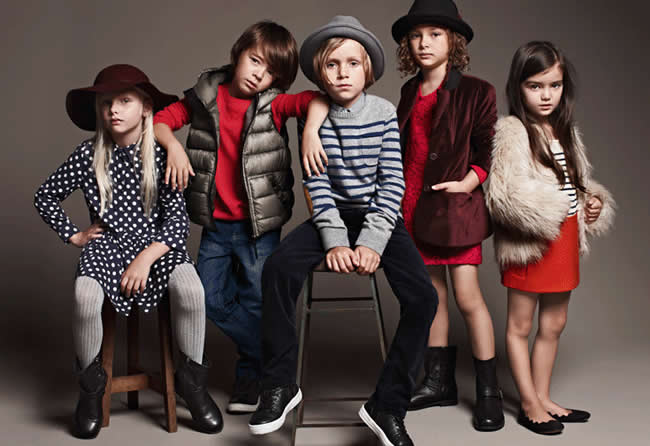Occasionally, children will suddenly decide they have fallen in love with something, and there’s nothing anybody can do to dissuade them. Whether it’s a cartoon character, football team, breed of dog or pop singer, these infatuations can be intense and lengthy. Such passions are a healthy part of growing up, showing interest in the outside world, developing tastes and opinions and forging an independent personality.
Sometimes,however, interests take on a more powerful role in a child’s life. Some kids form ambitions early on about the role they want to play in adulthood. Some aim to be archaeologists and childhood weekends are spent digging for antiquities and treasure. Others follow the medical path and decide early they will be doctors or vets, caring for friends and animals between school studies. Children with a creative streak often become absorbed in crafts and making things at home.

Here, we will be discussing how best to nurture the dreams of a child who wants to be a fashion designer.
Expect Drama
Perhaps you had an inkling they had a more than passing interest in fashion. Maybe it was their frequent visits to the dressing up box, their attempts at ‘re-tailoring’ their party dress or their preference for Vogue over The Dandy – whatever, parenting a child with a heightened sense of fashion is always going to be something of a wild ride.
Fashionistas often have a heightened sense of the theatrical, so expect some tantrums and tears along the way, but have patience, because if they truly love creating new designs, the fulfilment and satisfaction they gain from it will be very rewarding.
Expand their World
As a parent it is your role to facilitate, guide and inspire when it comes to your offspring’s aspirations. The first priority is to encourage their drawing and art skills. Any fashion designer worth their salt will tell you that a design needs to be rendered on paper initially. Okay, if their drawing isn’t that strong, there are CAD (Computer Aided Design) programmes to assist with putting down design ideas. That said, the conventional route into fashion design is usually via Art School, where drawing techniques are covered extensively.
Other areas that require nurturing are practical hand skills such as sewing and pattern making and also photography which is an ideal medium for collecting ideas and recording designs.
Practical sewing skills will be of great value in understanding the possibilities of what can and can’t work. Secure the support of an older relative with sewing, knitting or other skills they can hand down to your child. Not only will it help with your child’s development, it will serve as a bonding exercise between generations.
Take your child to The Victoria and Albert Museum in London to see the historical costumes on display. Inspiring fashion throughout the ages is featured at this fabulous museum of applied arts, and it is the perfect place to fire young imaginations with outlandish, impossible and sublimely beautiful fashion creations.
Modern Techniques
Children will often be more readily seduced by modern techniques when applied to fashion. Why not instigate a project that starts with an initial design process and finishes with an end product? A project to design your own t shirt will involve the drawing up of a design, then the transference of it onto a t shirt by digital printing process. Modern technology means it is simple to design your own t shirt, you don’t need to buy bulk orders, just print as many as you need. The smile on their face when they see their wearable art will be priceless.
Old Style
Jumble sales and second hand stores where clothing can be acquired at low cost are great places for budding fashion designers to flex their creative muscles. Adapting, modifying and chopping up old clothes to create new outfits can be achieved with a low cash investment, so if things go wrong, it matters less. Encourage children to look at clothes in a detached way, examining whether they can mix and match different parts of garments. Collars often detach, buttons and belts can be swapped over, some fabrics are easier to work with than others – let them explore and experiment to gain confidence with the materials. Some children like to make outfits for their teddies or dolls and approaching fashion design on this smaller scale can be a lot less daunting.
If you have a mini fashion designer under your roof, follow these tips for nurturing their passion. And just think, if they become the next Karl Lagerfeld or Stella McCartney, your future could see you luxuriating in couture and designer wear…Lucky you!




